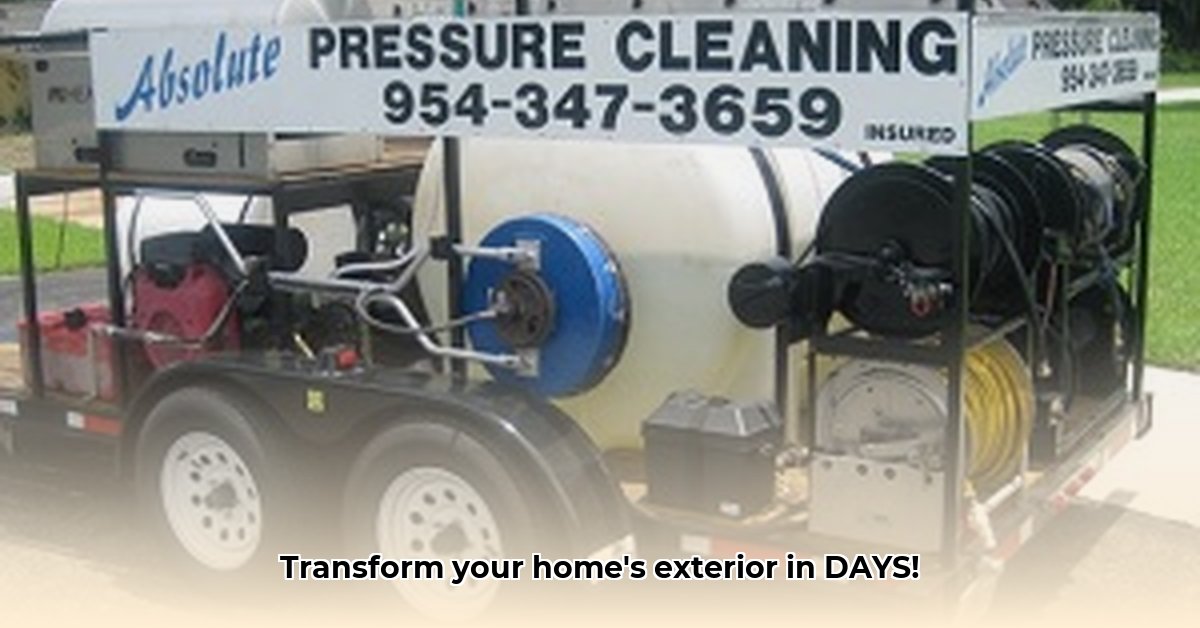
Understanding Absolute Pressure Washing: Debunking the Myths
The idea of wielding a high-powered pressure washer can be intimidating. Many homeowners fear causing damage to their siding, paint, or even the underlying structure. However, the truth is that absolute pressure washing, when done correctly, is a remarkably effective and safe way to revitalize your home's exterior. The key lies in understanding the nuances of the process and employing the right techniques. This isn't about brute force; it's about precision and control. Think of it as a delicate dance between power and precision, not a demolition derby.
Have you ever wondered if pressure washing can actually damage your home's exterior? Many people mistakenly believe that high pressure will inevitably strip paint or crack siding. This is often not the case. With the proper technique and equipment, pressure washing can be a gentle yet effective way to remove dirt, grime, and other debris without causing damage – but improper use could.
Getting Started: Preparation is Key
Before you even switch on the pressure washer, careful preparation is essential for a successful and safe cleaning. This phase sets the stage for a flawless outcome. Neglecting this vital step could lead to uneven cleaning, accidental damage, or inefficient use of time and resources.
Step 1: Surface Assessment (The Crucial First Step): Begin by thoroughly inspecting your home's exterior. Identify areas with loose paint, damaged wood, or other delicate spots. Document these areas, as they may require more gentle cleaning techniques or a different cleaning method altogether. (Remember, a gentler approach is better than risking damage). A thorough inspection is vital.
Step 2: Assembling Your Equipment (Gathering Your Arsenal): Gather your necessary equipment: a pressure washer (choose one appropriate for the size of your project), different nozzles (various spray patterns provide versatility for different surfaces), safety glasses, sturdy work gloves, and closed-toe shoes. Consider environmental-friendly detergents if you want to minimize the impact on your garden or pets. Selecting the correct nozzle for the job is critical.
Step 3: Safety First (Always Prioritize Safety): Wear safety glasses to protect your eyes from debris and chemicals. Wear sturdy gloves to protect your hands from chemicals and the high-pressure water stream. Closed-toe shoes provide protection for your feet. This proactive approach is crucial.
The Washing Process: Technique and Precision
This is where the magic happens—but remember, finesse is paramount. A chaotic approach will yield unsatisfactory results at best and damage at worst.
Step 1: Pre-Soaking (Optional, but Highly Recommended): If facing particularly stubborn grime or mildew, pre-soaking the surface with an appropriate cleaner can significantly enhance the cleaning process. Allow the cleaner to dwell as per the manufacturer's instructions. This step is typically worth the effort and increases efficiency.
Step 2: Applying the Pressure (The Controlled Spray): Hold the pressure washer wand approximately 12-18 inches away from the surface, maintaining a slightly downward angle. Overlap each pass to ensure complete coverage. Work in manageable sections, paying close attention to detail. Consistent distance is crucial. A steady hand is essential.
Step 3: Nozzle Selection (Choosing the Right Tool): Different nozzles create different spray patterns. A 40-degree nozzle is generally excellent for a wide variety of surfaces. However, for intricate areas or stubborn stains, a narrower nozzle might be necessary. The right tool for the job is key.
Step 4: Pressure Control (Finding the Sweet Spot): Start with the lowest pressure setting and gradually increase as needed. Delicate surfaces like vinyl siding or wood require much lower pressure than tougher materials such as concrete or brick. Always err on the side of caution. Less is more in many cases.
Post-Washing and Long-Term Care: Maintaining Your Results
Your hard work deserves to last. Take these steps to keep your exterior sparkling.
Step 1: Rinsing (Washing Away the Residue): Thoroughly rinse the entire surface to remove all traces of cleaner and loosened dirt. This step is vital for preventing streaking. A complete rinse is crucial.
Step 2: Drying and Inspection (A Final Checkup): Allow the surfaces to completely air-dry and then conduct a thorough inspection, checking for any signs of damage. Address any issues immediately. A final check is your insurance policy.
Step 3: Preventative Maintenance (Keeping it Clean): Regular cleaning is far simpler than letting dirt and grime accumulate. A regular, gentler cleaning routine will prevent serious build-up.
Step 4: Protective Sealants (Optional, but Often Beneficial): For wood or porous materials, a protective sealant can enhance longevity and prevent future grime buildup. A sealant can extend the life of your home's exterior.
Choosing the Right Cleaning Solution: Eco-Friendly Alternatives
Where possible, opt for eco-friendly detergents. Many are just as effective as harsh chemicals without the environmental impact. Always check the manufacturer's instructions to ensure compatibility with your surfaces. Environmental concerns should weigh heavily.
Conclusion: Embrace the Power of Absolute Pressure Washing
Absolute pressure washing is a powerful tool. When used correctly, it can dramatically enhance your home's curb appeal. However, improper use can lead to damage. Following these steps and prioritizing safety guarantees stunning results. Now, go and transform your home's exterior!